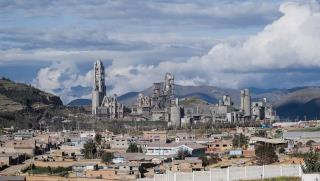Argentina is facing more economic woes as inflation, interest rates, unemployment and the poverty rate continue to climb. But given the pressing need for both housing and infrastructure, its cement producers continue to invest in new capacity.
At the end of October, Argentinians went to the polls to elect their president amid challenging economic times. The then-incumbent president, Mauricio Macri, came to the role in 2015 promising to revive the economy. A cornerstone of his manifesto was a national transport infrastructure plan costing US$33bn by 2019 alone, but as time went on, investment interest began to wane. In 2018 Argentina suffered its worst drought in years, causing the peso to lose half its value against the US dollar and forcing Mr Macri to turn to the IMF for help. This was followed in August 2019 by his crushing defeat in the primary elections to his rival, the Peronist Alberto Fernandez, who beat him by a far larger-than-expected 16 points. The outcome of the October elections gave victory to centre-left Mr Fernandez, who received 48.1 per cent of the vote.
